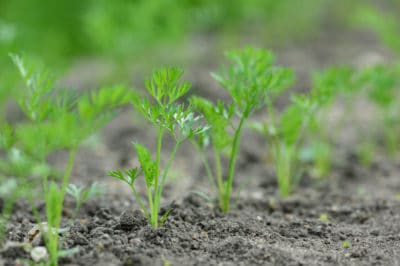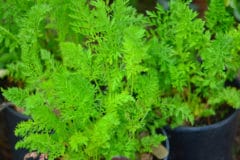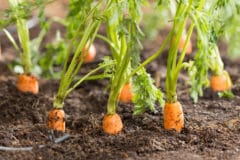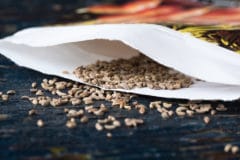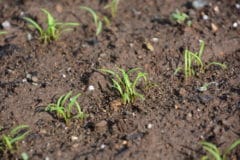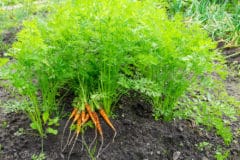.
Transplanting Carrots Isn’t Common
Whether your carrots are grown in your garden, or in pots – indoor or outdoor – there’s very little need to transplant them. However, you may find an occasion where you decide it’s necessary.
There are a few reasons why you might want to transplant your carrots. In most cases, you’ll be thinning the plants in your pots or carrot patch, and decide to transplant the seedlings.
How to Transplant Your Carrots
- Water, then carefully pull your seedlings from the soil . Hold the stem and pull gently.
- Grab a pencil, pen, or similar tool.
- Select the area of your garden to place your new carrots. Be sure to leave at least two inches between your carrots and any other plants.
- Push your pencil as far into the soil as possible.
- Push your pencil as far into the soil as possible.
- Place the root of the seedling in the hole and hold it there; push dirt up around the stem with your other hand. You want the dirt to hold the plant in place.
- Once you’ve gotten all your thinned plants in the ground, water gently. Too much force will uproot your seedlings and ruin all your work.
Often, you’ll hear gardeners say that transplanting carrots doesn’t work, and this may hold true in many cases. However, since you’re transplanting plants you would have discarded otherwise, it may seem to be worth the risk.
Seedlings vs. Maturing Plants
While it may be worth the time and trouble to transplant thinned seedlings, this may not be advisable for plants that have developed for several weeks. Your seedlings are likely only four weeks old or so, whereas a plant that’s been in the ground for a couple of months should probably be left alone; disrupting a developed root system could spell the end of the plant.
If your carrot patch must be moved, despite the growth stage of your carrots, then be as careful as possible and remember that carrots prefer loose soil and plenty of water. Follow the same instructions as for seedlings, but use a larger hole-maker so your plants will go into the ground more easily. And, despite some gardeners having reported success, don’t be surprised if you lose some plants to the process.
